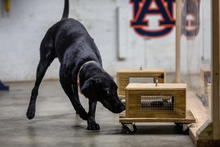Message from the Chair
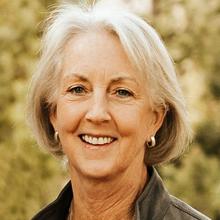
Happy New Year!
I still hear people greeting each other this way weeks after January 1, 2021. 2020 was a challenging year in a number of ways for everyone. Therefore, this simple heartfelt wish for a healthy, professionally rewarding 2021 just hasn’t gotten old yet. Although challenged, OSAC members individually and as subcommittees (SCs) and scientific area committees (SACs) hardly broke stride. With the support of the OSAC Program Office that pivoted on a dime to provide more virtual meeting resources, SCs and SACs continued to meet and move standard development work forward.
The Forensic Science Standards Board (FSSB) was no exception. We missed meeting in person for our quarterly meeting this December. Usually, this is our opportunity to get to know new members. Like everyone else, we have had to work to develop those relationships virtually. Regardless, the December FSSB meeting was a productive one where time was spent reviewing the standards (Tiers 1 – 5) and other work products in development by the SCs, and alignment with the OSAC Organizational Priorities was confirmed. High priority work continues related to terminology, and the FSSB Terminology Task Group developed their game plan for the near future.
Time was also spent discussing the FSSB directive provided last September to move towards the use of the terms “observation”, “interpretation” and “opinion” and away from the use of the term “conclusion” in standards being developed and revised. The FSSB realizes that this transition will be a multi-year endeavor but has already seen the positive results of steps in this direction.
We ended our two-day meeting with a session that included all OSAC leadership (SC, SAC, and FSSB) that could join. We will continue this new tradition at each FSSB “in-person” meeting with the goal to increase direct interaction and communication among all that serve in leadership positions within the OSAC. As the saying goes – We don’t always have to agree with one another, but we need to have the conversation.
I’ll end this message by promoting two outreach activities. Please read the feature article in the newsletter that details OSAC-related presentations at the upcoming AAFS meeting February 15-19, 2021. Also see the article related to the first OSAC Stakeholder Engagement Meeting.
Respectfully,
Laurel Farrell, FSSB Chair
OSAC at AAFS
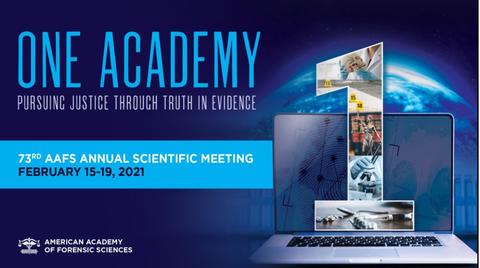
There will be plenty of OSAC-related content at the upcoming 2021 American Academy of Forensic Sciences (AAFS) Annual Scientific Meeting. If you’re attending the virtual meeting February 15-19 be sure to check out these standards sessions and presentations:
Plenary Session
- Wednesday, February 17, 9:30 – 11:00 a.m. CST: One Academy Pursing Justice through Truth in Evidence
Workshops (registration fee)
- Monday, February 15, 1:00 – 5:00 p.m. CST: W9 What They Don’t Know Can Kill You
- Tuesday, February 16, 1:00 – 5:00 p.m. CST: W17 An Update on Analytical Approaches for Hemp/Marijuana Differentiation
- Tuesday, February 16, 1:00 – 5:00 p.m. CST: W19 Most Valuable Publications (MVPs) of Forensic DNA: Examining the Most Valuable Publications in the Field
Case Break Session
- Tuesday, February 16, 7:00 – 8:00 a.m. CST: CB1 Forensics Standards Development: What’s New with Standards Developing Organizations (SDOs) and What is the Organization of Scientific Area Committees’ (OSAC’s) Role?
Interdisciplinary Session
- Tuesday, February 16, 1:00 – 5:00 p.m. CST: Special Session #1 To See or Not to See: Unbiased Answers to Forensic Questions
Standards Consortium
- Tuesday, February 16, 8:00 a.m. – 12:00 p.m. CST: The Implementation of Forensic Science Standards in an Operational Setting: Challenges and Solutions
Section Presentations - Criminalistics
- Wednesday, February 17, 10:15 – 10:30 a.m. CST: B29 Defining and Explaining Comparative Spectral Differences within OSAC’s Trace Materials Standards
- Friday, February 19, 1:15 – 1:30 a.m. CST: B152 A Standards Development for Visual Color Determination and Comparison in Forensic Soil Examinations: The OSAC Subcommittee on Geological Materials
Section Presentations - Digital & Multimedia Sciences
- Friday, February 19, 9:00 – 9:20 a.m. CST: C19 The Organization of Scientific Area Committees (OSAC) Digital/Multimedia Scientific Area Committee Standards Work—Part 1: Digital Evidence and Speaker Recognition
- Friday, February 19, 9:20 – 9:40 a.m. CST: C20 The Organization of Scientific Area Committees (OSAC) Digital/Multimedia Scientific Area Committee Standards Work—Part 2: Video/Imaging Technology & Analysis (VITAL)
Section Presentation - Forensic Education & Lab Management
- Friday, February 19, 2:45 – 3:00 p.m. CST: E76 Setting a New Standard in Access and Quality for Forensic Science and Justice Training
Section Presentation - Jurisprudence
- Thursday, February 18, 10:05 – 10:20 a.m. CST: F4 Implementing Organization of Scientific Area Committees (OSAC) Standards at the Local Level: Lessons from Texas
Section Presentation - Questioned Documents II
- Thursday, February 18, 9:00 – 9:30 a.m. CST: J11 Standards for the Examination of Documents Using a Digital Workspace
OSAC Registry Updates
First Fire Debris Standards Added to OSAC Registry
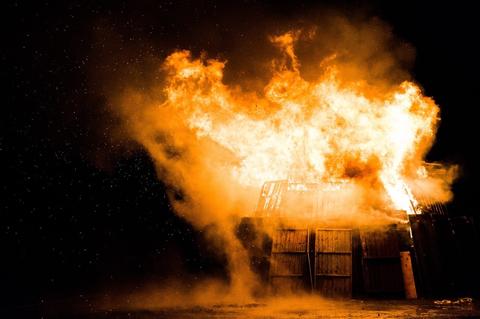
OSAC has added the first fire debris standards to the Registry. These four standards, revised by OSAC’s Ignitable Liquids, Explosives, & Gunshot Residue (ILEGSR) Subcommittee through ASTM, focus on the most commonly used procedures for preparing vapor phase samples.
Forensic analysis of ignitable liquids often involves evidential material in the form of fire debris, including burned or charred material recovered from the fire scene. Analysis of such fire debris generally follows three main steps:
- Separation of a sample from any ignitable liquid residues that may be present in the original evidential material.
- Instrumental analysis of the separated sample.
- Interpretation of the instrumental data in order to render an opinion regarding whether an ignitable liquid was present in the original evidential material and, if so, its classification, as well as some examples of commercially available products that fall into that classification.
When separating a sample from ignitable liquid residues (step 1), there are several sample preparation techniques from which an analyst may choose, as there is no single extraction technique that is ideal for all types of original evidential material. The new fire debris standards on the OSAC Registry provide the step-by-step instructions required to perform commonly used procedures for preparing vapor phase samples and include:
- ASTM E1388-17 Standard Practice for Static Headspace Sampling of Vapors from Fire Debris Samples
- ASTM E1412-19 Standard Practice for Separation of Ignitable Liquid Residues from Fire Debris Samples by Passive Headspace Concentration with Activated Charcoal
- ASTM E1413-19 Standard Practice for Separation of Ignitable Liquid Residues from Fire Debris Samples by Dynamic Headspace Concentration onto an Adsorbent Tube
- ASTM E3189-19 Standard Practice for Separation of Ignitable Liquid Residues from Fire Debris Samples by Static Headspace Concentration onto an Adsorbent Tube
Guidance for the appropriate selection of one or more of these sample preparation techniques, as well as others, is provided in ASTM E3245-20ϵ1 Standard Guide for Systematic Approach to the Extraction, Analysis, and Classification of Ignitable Liquids and Ignitable Liquid Residues in Fire Debris Samples. ASTM E3245-20ϵ1 is a direct product of the work of the ILEGSR Subcommittee, and it is currently in the OSAC Registry approval process.
For information related to instrumental analysis, interpretation, and classification (steps 2 and 3), analysts currently turn to ASTM E1618-19 Standard Test Method for Ignitable Liquid Residues in Extracts from Fire Debris Samples by Gas Chromatography-Mass Spectrometry. The ILEGSR Subcommittee is actively engaged in the restructuring and strengthening of ASTM E1618 by drafting proposed new standards for ignitable liquids analysis by gas chromatography (electron ionization) mass spectrometry, interpretation of the resulting instrumental data, and classification of ignitable liquids based upon their chemical composition.
The ILEGSR Subcommittee also has additional standards related to the analysis of ignitable liquids in the pipeline. For example, a standard on terminology relating to the examination of fire debris is currently under consideration for the Registry. Revisions to a standard practice for preserving ignitable liquids and ignitable residue extracts, and two new standard practices related to reporting results and opinions and training are in the consensus approval process within ASTM.
OSAC Registry Updates: FY 2021 Q1
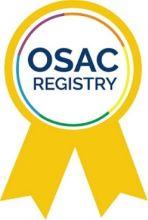
The OSAC Forensic Science Standards Board (FSSB) approved the following six standards for the OSAC Registry in FY 2021 Q1:
- ASTM E3233-20 Standard Practice for Forensic Tape Analysis Training Program (added November 3, 2020).
- ASTM E3234-20 Standard Practice for Forensic Paint Analysis Training Program (added November 3, 2020).
- ASTM E1388-17 Standard Practice for Sampling of Headspace Vapors from Fire Debris Samples (added December 1, 2020).
- ASTM E1412-19 Standard Practice for Separation of Ignitable Liquid Residues from Fire Debris Samples by Passive Headspace Concentration with Active Charcoal (added December 1, 2020).
- ASTM E1413-19 Standard Practice for Separation of Ignitable Liquid Residues from Fire Debris Samples by Dynamic Headspace Concentration onto an Adsorbent Tube (added December 1, 2020).
- ASTM E3189-19 Standard Practice for Separation of Ignitable Liquid Residues from Fire Debris Samples by Static Headspace Concentration onto an Adsorbent Tube (added December 1, 2020).
To access these standards and see a complete list of the Registry standards, please visit the OSAC website.
Registry Implementation Corner
Bode Technology Awarded OSAC Standards Implementer Certificate
Courtesy of Hannah Gillis, Bode Technology
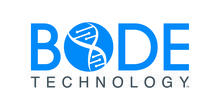
Bode began incorporating OSAC Registry standards into its quality system review in 2019 and declared their status as an OSAC implementing laboratory in 2020. Bode is the first private laboratory to declare implementation, in adamant support of the OSAC mission to unify forensic standards and best practices. “Early adoption of these standards demonstrates Bode’s commitment to a best-in-class approach to quality management to ensure accurate and reliable results are provided to Bode’s stakeholders” said Erin Sweeney, Bode’s Vice President of Forensic Operations.
Bode appreciates that the OSAC standards are science-based and draw from commonly accepted industry standards. These include, but are not limited to, the FBI Quality Assurance Standards and the ISO/IEC 17025:2017. The OSAC standards consolidate much of the overlapping key objectives of these source documents, along with relevant material from SWGDAM guiding documents, ISFG recommendations, NRC reports, published literature, and expert opinions. The standards also provide foundational principles and supporting information to summarize the validity of the requirements, with scientific backing for the specified approaches. This gives all reviewing stakeholders context for the relevance and value in adopting the standards, to in turn bolster confidence in the resulting data reported from participating laboratories.
Bode also values OSAC’s consensus-based approach to the standards development process. Through OSAC’s open comment process, Bode participates in the review of standards that are in development and provides input to help shape the final published standard. This transparency in standards development to include stakeholders across public and private labs, scientists, statisticians, legal experts, and forensic practitioners, brings a wide view of perspectives to the review process. This process also allows laboratories to provide additional considerations for requirements that may conflict with existing lab policies or may be overly prescriptive and difficult to successfully implement.
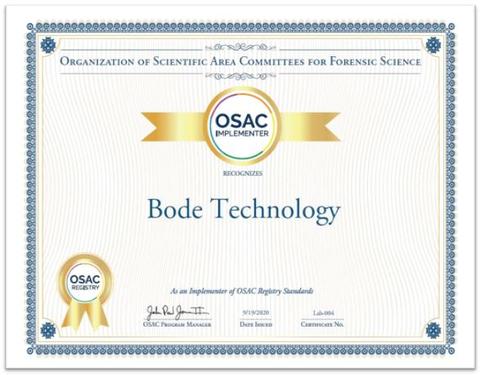
Bode began implementation with the first two ANSI/ASB standards added to the OSAC Registry: ANSI/ASB 020, Standard for Validation Studies of DNA Mixtures, and Development and Verification of a Laboratory’s Mixture Interpretation Protocol and ANSI/ASB 040, Standard for Forensic DNA Interpretation and Comparison Protocols. These standards require the use of validation data to explicitly support the resulting standard operating procedures. Bode has developed several new implementation plans as a result of these standards.
One change Bode implemented was an administrative update to interpretation documentation.
Inherent to mixture interpretation are analyst considerations of valid assumptions in evaluation of a DNA profile. While Bode’s Standard Operating Procedure (SOP) detailed these considerations, not all assumptions were clearly documented in the case file, particularly in relation to allele edits made under consideration of differential carryover or expected contributor inclusion to a profile. The change in policy, which maintains the same analytical procedure, increases transparency by documenting any assumptions that were considered. While it was challenging to find a balance between being prescriptive enough to guide staff while also allowing room for analyst discretion to cover all scenarios encountered in casework, the policy change improved clarity of the case file and allows for technical review of the validity of the assumptions under which the interpretation was generated.
Another change Bode implemented is the expansion of validation implementation procedures to include SOP mixture verification. ANSI/ASB 020 introduces a requirement to perform a verification study of non-validation known data to confirm the validation-based SOP is applied as expected to the variety of sample types and data ranges encountered in casework. While Bode has always included a wide range of sample types in its training competency tests, there was not a formal evaluation of the SOP efficacy before releasing it for use in casework. The qualification of the analyst was evaluated, more-so than the qualification of the procedure. This new process allows Bode to confirm that the SOP has been understood and applied as intended, and to ensure consistency among analysts within the laboratory. ANSI/ASB 020 also recommends reviewing previous validations for compliance, and to supplement with additional validation studies where necessary. Through this process Bode was able to identify some areas of opportunity where supplemental validation studies will be beneficial.
Bode will continue to review and implement the relevant OSAC registry standards into its quality management system as they are approved. “We look forward to continued collaboration in the standard development process and appreciate the extensive efforts from all participating contributors to support this initiative” said Sweeney.
HFSC's Commitment to Continuing Education and Implementation
Courtesy of Ramit Plushnick-Masti, Houston Forensic Science Center
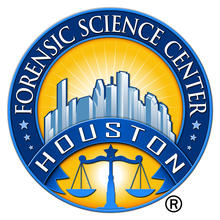
The Houston Forensic Science Center (HFSC) has implemented an annual company-wide continuing education goal to align with approved OSAC standards.
All HFSC staff are required to complete 16 hours of continuing education annually. This goal works especially well for forensic practitioners licensed by the Texas Forensic Science Commission, which has its own continuing education requirement.
“We are giving credit not only for training but also for presenting to others to make clear that we not only support gaining and strengthening knowledge, but also that we believe scientists must share their findings and collaborate to be truly successful,” said Dr. Peter Stout, HFSC’s CEO and president.
HFSC’s company goal is part of its commitment to adopt OSAC standards. HFSC’s board of directors approved a resolution in 2018 that committed the lab to voluntarily adopt and implement all applicable OSAC standards posted to the registry.
At the same time, staff have independently expressed a desire and need for training and continuing education. This goal guarantees HFSC is behind the push for growth and ensures the subject is top of mind for everyone.
“The 16-hour continuing education requirement puts a spotlight on our commitment to developing staff at all levels,” said Dr. Amy Castillo, HFSC’s COO and vice president.
Staff developed an all-encompassing tracking system that also provides information on qualified trainings and visibility on whether the goal is being met.
“The information is displayed on a continuing education dashboard that we built internally. The dashboard can be filtered by staff name, section, date range and more,” Dr. Castillo said. The dashboard adds a layer of visibility and accountability for staff and helps analysts stay organized when it comes time to renew certifications or state-mandated licensing requirements. “We’ve ensured staff have a wide selection of webinars, books and in-house training, among other things, to help them reach their goal,” Dr. Castillo said. “We want to send a message that training is never a burden, but a priority.”
ASCLD and AFQAM Support OSAC Registry Implementation

Two professional organizations have declared their support of the OSAC Registry through policy recommendations. Both organizations are represented on the OSAC Forensic Science Standards Board.
The American Society of Crime Laboratory Directors (ASCLD) is a nonprofit professional society of crime laboratory directors and forensic science managers dedicated to providing excellence in forensic science through leadership and innovation. ASCLD supports policies that support the ongoing development of standards with significant forensic practitioner involvement and leadership. In its 2020-2021 National Outreach Priorities & Agenda, ASCLD noted its support of OSAC and encourages forensic science service providers to evaluate and implement the standards on the Registry whenever possible.
The Association of Forensic Quality Assurance Managers (AFQAM) is a professional organization whose mission is to promote standardized practices and professionalism in quality assurance management for the forensic science community. As an organization based in quality, AFQAM encourages forensic science service providers to evaluate and implement the standards on the OSAC Registry whenever possible, as reflected in its position statement.
OSAC appreciates the support from ASCLD and AFQAM and looks forward to continuing to work with both organizations to advance forensic science through standards development and implementation.
OSAC Registry Implementer: Kentucky State Police Forensic Laboratories
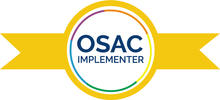
Kentucky State Police (KSP) Forensic Laboratories were recognized by OSAC for voluntarily implementing the standards on the OSAC Registry related to seized drug analysis. KSP labs are one of the first laboratory systems in the country to adopt these standards. Read more from Laboratory Director Jeremy Triplett about KSP’s implementation efforts.
OSAC in Action
OSAC Holds First Stakeholder Outreach Meeting
On January 27, 2021 OSAC held its first Stakeholder Outreach Meeting. The purpose of this and future meetings is to formalize OSAC’s engagement with key stakeholder groups, share ideas to better support the forensic science community, and find common goals to work towards.
This initial meeting focused on standards developing organizations (SDOs), certification bodies, proficiency testing providers, and accreditation bodies and provided an opportunity for OSAC leadership to share their plans and priorities for the future. Stakeholders were also encouraged to share the ideas and challenges they see related to forensic science standards development and implementation, including how these activities may impact their future efforts.
A summary of this meeting will be shared on the OSAC website once available. Additional regularly scheduled meetings with other forensic science stakeholders are being planned.
Firearms Process Map Now Available
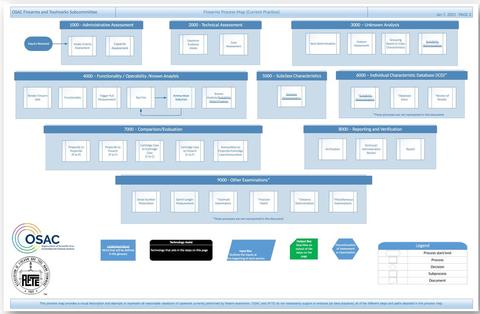
OSAC’s Firearms & Toolmarks Subcommittee, in partnership with the Association of Firearm and Tool Mark Examiners (AFTE), has developed a process map that describes the process that most firearms examiners use when analyzing evidence.
This map provides a behind-the-scenes perspective into the various components and complexities involved in the firearms examination process and can be used to identify best practices, reduce errors, assist in training new examiners, and highlight areas where further research or standardization would be beneficial. According to Erica Lawton, Chair of OSAC’s Firearms & Toolmarks Subcommitee, “The Firearms Process Map fills a much-needed gap in documenting the methodology and decision-making process taking place each day by examiners throughout the United States as well as internationally.”
The Firearms & Toolmarks Subcommittee would like to thank the following task group members for their work on this process map: Gerard Dutton, Zachary Carr, Stephanie Happ, Stacey Hartman, Bridget Chambers, William (Bill) Demuth, and Ron Nichols. Thanks also to Melissa Taylor, Heather Waltke, and Blythe Toma for being the facilitators and Visio Operators for this project.
Read more about the Firearms Process Map in this OSAC news update.
Participate in OSAC's Seized Drugs Subcommittee Marijuana Analysis Survey
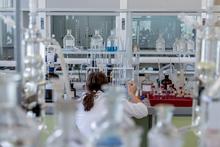
Members of OSAC’s Seized Drugs Subcommittee are conducting a survey to collect information on current forensic science practices for the analysis of marijuana. The survey focuses on collecting information related to decision limits for qualitative analysis, as well as sample preparation and methodology for quantitative analysis of seized marijuana drug evidence. The information collected will be used to gain a better understanding of the different approaches being applied to the differentiation between marijuana and hemp by forensic science service providers.
The information will assist the Seized Drugs Subcommittee in their development of a consensus-based standard that is useful and practical to the forensic science community.
Laboratories that perform seized drug analyses can participate in this survey until February 15, 2021.
OSAC in the News
OSAC’s Firearms & Toolmarks Subcommittee Develops Firearms Process Map
Forensic Magazine reshared this OSAC news update highlighting the Firearms Process Map. This article was also shared in Mirage News.
Kentucky State Police Crime Lab Recognized by OSAC for Commitment to Standards
Read more about KSP’s adoption of OSAC Registry standards in this Forensic Magazine article.
Continuing Education: HFSC’s Investment
Learn about the OSAC Registry standard that requires 16 hours of annual continuing education and how it’s driving policy at the Houston Forensic Science Center (HFSC).
The Bite Mark Dentists and the Counterattack on Forensic Science Reform
This Albany Law Review paper mentions OSAC and the work being done to advance forensic science standards.
The ISHI Report – November 2020
This edition of the ISHI Report provides updates on OSAC’s new structure and processes as well as the human forensic biology and wildlife forensic biology standards moving through the Registry approval process.
OSAC Got a Refresh
Our colleagues at The Center for Statistics and Applications in Forensic Evidence (CSAFE) shared the announcement about our restructuring in its October Newsletter.
Upcoming OSAC/Major Events

February 2021
10 CSAFE Webinar: Treatment of Inconclusive Results in Error Rates of Firearm Studies
15-19 2021 AAFS Annual Scientific Meeting (virtual)
25 OSAC’s Crime Scene Investigation & Reconstruction Subcommittee – virtual meeting
March 2021
11 CSAFE Webinar: Handwriting Analysis in CSAFE
April 2021
8 CSAFE Webinar: IRT for Forensics: A Re-analysis of the FBI “Black Box” Study
12-16 OSAC’s Facial Identification Subcommittee – virtual meeting
29 OSAC’s Crime Scene Investigation & Reconstruction Subcommittee – virtual meeting
May 2021
17-20 OSAC’s Dogs & Sensors Subcommittee – virtual meeting
June 2021
1-3 OSAC’s Trace Materials Subcommittee – virtual meeting
24 OSAC’s Crime Scene Investigation & Reconstruction Subcommittee – virtual meeting
Professional Organization Spotlight
American Academy of Forensic Sciences
The American Academy of Forensic Sciences (AAFS) is a multidisciplinary professional organization that provides leadership to advance science and its application to the legal system. The objectives of the Academy are to promote professionalism, integrity, competency, education, foster research, improve practice, and encourage collaboration in the forensic sciences. With over 6,900 members divided into eleven sections, AAFS is unique in representing the forensic community as a whole. Included among the Academy’s members are physicians, attorneys, dentists, toxicologists, anthropologists, document examiners, digital evidence experts, psychiatrists, physicists, engineers, criminalists, educators, and others. Representing all 50 United States, Canada, and 70 other countries worldwide, they actively practice forensic science and, in many cases, teach and conduct research in the field. The AAFS represents its membership to the public and serves as the focal point for public information concerning the forensic science profession. It provides service to our community through the Journal of Forensic Sciences (an internationally recognized scientific journal), the Academy Newsfeed, its annual scientific meeting, conducting of webinars, and the initiation of actions and reactions to various issues of concern.
In 1973, AAFS became affiliated with the Forensic Science Foundation (FSF), a nonprofit organization committed to studying the application of science to the resolution of social and legal issues. The FSF has become the educational, scientific, and research arm of the AAFS. Charitable donations to FSF are used to promote public education concerning all disciplines in the forensic sciences; to develop and conduct education and training programs; to develop new ways to improve the forensic sciences; and to support research in fields relating to the forensic sciences.
The AAFS recognized the need to support the OSAC’s development of a national registry of consensus-based standards. AAFS members are active participants on all the OSAC subcommittees. In February 2016, AAFS created the Academy Standards Board (ASB), a wholly owned subsidiary organization accredited by the American National Standards Institute (ANSI) as a standards development organization (SDO). This organization works closely with OSAC and its subcommittees by developing American National Standards (ANS) based on OSAC documents. To date, ASB has published 44 ANS with 12 approved for the Registry and over 100 additional draft OSAC standards going through the standards development process.
AAFS is proud of our role working with OSAC and the forensic science community to advance the field of forensic science both nationally and internationally. AAFS is represented on the OSAC Forensic Science Standards Board.
NIST Research Activities

A national survey of handlers of evidence is in progress and will be live until April 2, 2021. Click here for more information and to participate.
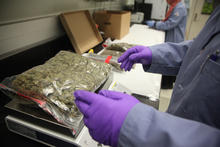
NIST Study Will Help Labs Distinguish Between Hemp and Marijuana
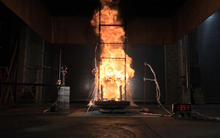
New NIST Fire Calorimetry Database is Available to Answer Your Burning Questions
